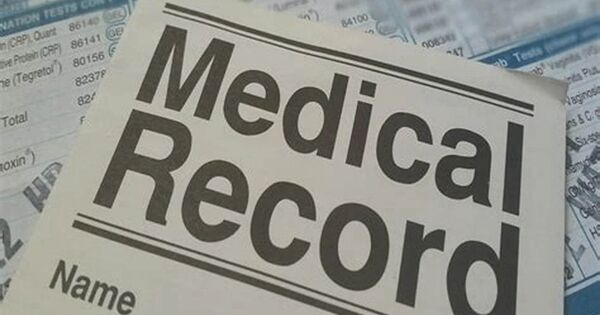A lack of precise record-keeping in clinics and emergency departments may be impeding efforts to reduce unnecessary antibiotic usage, according to two recent investigations by University of Michigan physicians and their colleagues.
In one study, approximately 10% of children and 35% of adults who received an antibiotic prescription during an office visit had no clear explanation for the antibiotic listed in their records. According to the studies, the rate of this type of medication is particularly high in people treated in emergency departments and individuals seen in clinics who have Medicaid or no insurance. However, the problem also arises in children.
Without knowing what caused these incorrect prescriptions, clinics, hospitals, and health insurers will find it even more difficult to take efforts to ensure that antibiotics are only supplied when absolutely necessary, according to the researchers.
Antibiotic overuse and misuse increase the danger that germs will develop resistance to the medications, making them less helpful for everyone. Inappropriately given antibiotics may potentially cause more damage than help to patients.
Our studies help contextualize the estimates of inappropriate prescribing that have been published previously. Those estimates don’t distinguish between antibiotic prescriptions that are considered inappropriate due to inadequate coding and antibiotic prescriptions truly prescribed for a condition that they can’t treat.
Joseph Ladines-Lim
“When clinicians don’t record why they are prescribing antibiotics, it makes it difficult to estimate how many of those prescriptions are truly inappropriate, and to focus on reducing inappropriate prescribing,” said Joseph Ladines-Lim, M.D., Ph.D., first author of both of the new studies and a combined internal medicine/pediatrics resident at Michigan Medicine, U-M’s academic medical center.
“Our studies help contextualize the estimates of inappropriate prescribing that have been published previously,” he added. “Those estimates don’t distinguish between antibiotic prescriptions that are considered inappropriate due to inadequate coding and antibiotic prescriptions truly prescribed for a condition that they can’t treat.”
Ladines-Lim worked with U-M pediatrician and health care researcher Kao-Ping Chua, M.D., Ph.D., on the new studies. The one on outpatient prescribing by insurance status is in the Journal of General Internal Medicine and the one on trends in emergency department prescribing is in Antimicrobial Stewardship and Healthcare Epidemiology.

Building on previous research
Chua and colleagues recently published findings on trends in incorrect antibiotic prescribing in outpatients under the age of 65, estimating that approximately 25% were inappropriate. However, that figure includes antibiotic prescriptions for infectious diseases that drugs do not treat, such as colds, as well as antibiotic prescriptions that are not related with any diagnoses that could be considered an antibiotic indication.
The new research add complexity to that finding by focusing more closely on these two distinct types of improper prescriptions. The majority of antibiotic stewardship initiatives to date have concentrated on minimizing the use of the first category of improper prescription: those written for infectious but antibiotic-inappropriate illnesses such as colds. According to the latest research, such patients continue to account for 9% to 22% of all antibiotic prescriptions, depending on the setting and age group.
But since doctors and other prescribers aren’t required to run a test for a bacterial infection or list a specific diagnosis in order to prescribe antibiotics, symptoms provide potential clues to why they might have written a prescription anyway. So some of those 9% to 22% of all people receiving antibiotics may have also had a secondary bacterial infection that the clinician suspected based on symptoms. However, it’s impossible to know.
Regarding those who received antibiotics despite having no infection-related diagnoses or symptoms in their records, the researchers speculate that clinicians may not have bothered to add these diagnoses or symptoms to the patient record inadvertently — or even deliberately — in order to avoid the scrutiny of antibiotic watchdogs. However, the researchers suggest that the lower percentage of diagnosis recording in patients in the healthcare safety net could be related to how healthcare organizations are compensated.
Clinics and hospitals frequently get a certain amount from Medicaid to care for all patients with that sort of coverage. As a result, they are less motivated to keep extensive records than privately insured patients, whose care is typically reimbursed on a fee-for-service basis.
“This could actually be a matter of health equity if people with low incomes or no insurance are being treated differently when it comes to antibiotics,” says Ladines-Lim, who has also studied antibiotic use related to immigrant and asylum-seeker health and will soon begin a fellowship in infectious diseases.
He believes that commercial and public insurers, as well as health systems, should incentivise proper diagnosis coding for antibiotic prescriptions, or at the very least make it easier for clinicians to explain why they are prescribing them. This might even entail mandating clinicians to record the reason for antibiotic prescriptions before they are given to pharmacies via electronic health record systems.
After all, Ladines-Lim explained, physicians frequently have to provide a diagnosis to justify the tests they order, such as CT scans or x-rays. Antibiotic resistance poses an international concern to individuals with antibiotic-susceptible diseases, therefore taking similar efforts to justify antibiotic prescriptions may be prudent.
















